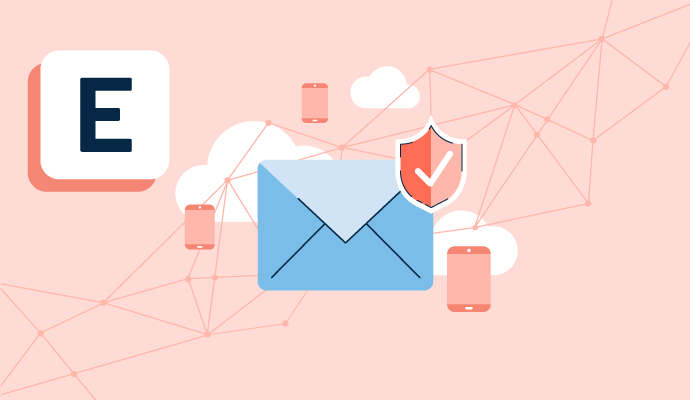How to Protect Your Business From Email Security Threats
An email has become the backbone of modern business communication and transactions in today’s fast-paced digital world. It has transformed how enterprises operate, allowing seamless communication across different geographical locations. However, with this convenience comes a dark side of risks that can threaten the foundation of businesses. Email security for business can be dangerous adversaries capable of breaking down defenses, stealing sensitive information, and damaging the trust that sustains commercial relationships.
As our world becomes more connected, the risks associated with email security threats are becoming increasingly complex and sophisticated. Cybercriminals use advanced tactics to exploit vulnerabilities in email systems, which can result in various types of attacks, such as phishing, malware propagation, and ransomware extortion. These breaches can lead to severe consequences, including financial losses, and reputational damage that extend beyond the digital realm. Organizations must take a proactive approach to protect their business communications’ integrity, and confidentiality from constantly changing email security threats. To secure your email from threats, get in touch with our Managed IT Services professionals.
This blog post will explore practical strategies to safeguard your business against email security threats.
9 Ways to Protect Your Business From Email Security Threats
1. Educate Your Team
Educating your team is crucial in protecting your business from email security threats. Many cyber attacks and data breaches occur due to human error, such as clicking on malicious links or downloading infected attachments. By providing comprehensive training on email security best practices, you can empower your employees to recognize and avoid potential threats.
To protect your business from email security breaches and keep sensitive information safe, it’s essential to educate your team about phishing emails, suspicious attachments, and the significance of having strong passwords. Regular reminders and updates can help reinforce these lessons and aid in keeping your team vigilant against emerging threats. By investing in your team’s education and awareness, you can significantly reduce the risk of email security breaches and safeguard your business’s sensitive data.
2. Enable Multi-Factor Authentication (MFA)
To safeguard your business against email security threats, it’s crucial to enable multi-factor authentication (MFA). MFA provides an additional layer of protection by requiring users to verify their identity through a code sent to their mobile device, in addition to entering their password. This significantly reduces the risk of unauthorized access to your email accounts, even if someone gains access to the password.
To minimize the chances of email-related security breaches and safeguard your company’s sensitive data from unauthorized access, it is highly advisable to adopt MFA. It is best practice to enable MFA for all employees to protect your business.
3. Regular Software Updates
Regular software updates are crucial for protecting your business from email security threats. Software updates often include critical security patches and bug fixes that address vulnerabilities that cybercriminals may exploit. Keeping your software up to date ensures you have the latest security measures to defend against potential attacks.
It is also recommended to enable automatic updates whenever possible, eliminating the need for manual intervention and ensuring that your systems are always protected. Further, regularly updating your antivirus and anti-malware software can provide an extra defense against email-borne threats. To protect your business’s sensitive information and avoid email security threats, it’s important to make regular software updates a priority.
4. Email Encryption
Email encryption is essential for protecting your business from email security threats. Encryption works by scrambling the contents of an email so that only the intended recipient can decipher it with a unique decryption key. This helps prevent unauthorized access to sensitive information and ensures your communications remain confidential. Email encryption can help safeguard your business’s intellectual property, customer data, and other valuable information from being intercepted or compromised.
Choosing a reputable email encryption solution that meets industry standards and provides end-to-end encryption is essential to ensure maximum security for your business communications. By encrypting your emails, you can significantly reduce the risk of falling victim to email-based attacks such as phishing, or data breaches, ultimately protecting your business’s reputation and maintaining the trust of your customers.
5. Monitor Outbound Traffic
Monitoring outbound traffic can safeguard your business against email security threats. By closely monitoring the emails leaving your organization, you can quickly detect any suspicious or unauthorized activity that may indicate a security breach. This includes monitoring for unusual attachments, unexpected recipients, or large volumes of outgoing emails.
To protect against email security issues, it’s essential to put in place effective solutions and keep tabs on reports and logs to quickly detect and address any potential threats. It’s also crucial to educate your staff on best practices for email usage and train them to recognize phishing attempts. By monitoring outbound traffic, you can protect your business’ confidential information and prevent it from being accessed by unauthorized individuals.
6. Create Strong Password Policies
Implementing strong password policies is vital for protecting your business from email security threats. A strong password should combine uppercase and lowercase letters, numbers, and special characters. It should also be at least eight characters long and different from previous passwords. Encourage employees to create unique passwords for each online account and avoid using easily guessable information such as their name or birthdate.
Consider implementing multi-factor authentication, which adds an extra layer of security by requiring users to provide additional verification, such as a fingerprint or a unique code sent to their mobile device. Regularly remind employees to update their passwords and provide training on best practices for creating and managing secure passwords.
7. Regular Backups
Regularly backing up your emails and important data is absolutely crucial to protect your business from email security risks. It’s imperative that you take action to ensure the safety of your information in case of any system compromise or data loss. We strongly recommend scheduling automated backups on a daily or weekly basis, depending on the amount and relevance of your emails.
It is important to store backups of your email securely, either offline or in a separate location, to prevent unauthorized access or loss. By regularly backing up your emails, you can mitigate the impact of potential threats and ensure the integrity of your business communications.
8. Incident Response Plan
A robust incident response plan is essential for protecting your business from email security risk assessment. An incident response plan outlines the steps tour organization will take in case of a security breach or incident involving emails. It includes procedures for identifying and containing the threat and strategies for mitigating the damage and restoring normal operations.
A well-developed cybersecurity incident response planning should include clear roles and responsibilities, communication protocols, and a timeline for action. Regularly reviewing and testing your incident response plan is also crucial to ensure its effectiveness and identify any areas needing improvement. It is essential to have a well-thought-out incident response plan to reduce the impact of email security threats on your business.
Final Words
Safeguarding your business from email security threats is utmost important in today’s digital landscape. The risks posed by phishing attacks, malware distribution, and other email-based threats can have severe consequences for your company. By implementing a multi-layered approach that combines the ongoing employee education and training, and vigilant practices such as regular security audits and updates, you can significantly reduce the risk of falling victim to email security threats. Top priorities should be protecting sensitive information, maintaining operational continuity, and preserving your company’s reputation.

Greetings! I’m thrilled to introduce myself as a dedicated blogger with a fervent passion for crafting meticulously researched and insightful blogs. My mission is to provide you, the readers, with a treasure trove of valuable information. Join me in this exciting adventure of discovery – Thanks







